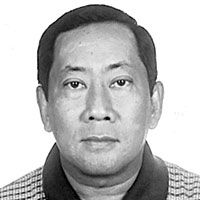Liberation Day in Cebu happened 65 years ago

Here in Cebu, we usually celebrate Liberation Day with the landing of US Forces in Tangke, Talisay on March 26, 1945. However, the Talisay landing did not even result in a firefight nor gave freedom to the Cebuanos because the Japanese Imperial Army decided to wait in the caves and trenches in the mountains of Babag. In fact the first major battle for the liberation of Cebu happened at Go Chan Hill (today it’s called the Ecotech), which guards the road leading to the Lahug Airfield. It took the Americal Division 3 days to clear, where there were casualties on both sides with some 200 Japanese soldiers killed and some 85 pillboxes neutralized.
If at all, tomorrow should be called Cebu Liberation Day because 65 years ago at 10AM in Barangay Ilihan, Tabogon in Northern Cebu, the Japanese Imperial Forces led by Gen. Katoaka together with Gen. Fukue and Admiral Harada and two other Japanese Generals along with some 2,667 Japanese soldiers (including Japanese women nurses from the Japanese Field Hospitals) stood on a grassy knoll where each Japanese officer surrendered his Samurai sword to the Regimental Commanders, of 132nd Infantry Regiment a.k.a. the Americal Division in a solemn surrender ceremony.
Then Gen. Kataoka surrendered his Samurai sword to the Commander of the 132nd, Gen. William H. Arnold. After this simple turnover of his Samurai, Gen. Kataoka ordered the 2,667 Japanese troops present to give up their weapons which they stacked in a pile including mortars, grenades and ammunition. In the next two days, an additional 7, 200 Japanese soldiers went to Ilihan to surrender to the US Forces.
If few people (except the old folks who witnessed it in Ilihan) got to know about this historical fact, it is because none of these are written in our history books. I got this information from the books that my uncle Dr. Alfredo Segura, the younger brother of War Hero Col. Manuel F. Segura who shares my passion on World War II history.
There are two books that gave great details of the American campaign to retake Cebu that my Tio Al gave me, one entitled “On the Southern Cross” and the other is entitled “Orchids in the Mud: a personal account by Veterans of the 132nd Infantry Regiment from 1941-1945” edited by Robert C. Muehrcke. The 132nd Infantry Regiment is also known as the Americal Division as they were formed in New Caledonia. They fought in Guadalcanal (this is the most known about the historic battles that the Americal Division fought) Bougainville, the Philippines and Japan.
Little do Filipinos know that while Japan officially surrendered to the United States on Aug.10 when Foreign Minister Mamoru Shigemitsu and Premier Hideki Tojo accepted the joint declaration of unconditional surrender issued in Potsdam on July 26, 1944, it was only on Aug.15 that Emperor Hirohito made the historic broadcast of his message to the Japanese people on Japan’s surrender and on this same date, US Pres. Harry Truman made this announcement over the radio. But in Cebu, the Americal Division was still fighting the Japanese 13 days after the official surrender of Japan. The fighting ended when the Japanese surrendered on Aug.28,1945.
After the surrender in Ilihan, the Americans herded the Japanese troops on board six-by-six trucks for the 50-mile journey from Ilihan to the Port of Cebu City. The additional 7, 200 Japanese troops that surrendered in the next two days, it brought the total number of Japanese troops who surrendered to the Americal Division in Cebu to 9,867. They were all transported back to Cebu City and loaded to waiting troopships for the trip back to Japan. The huge number of Japanese troops who surrendered in Cebu belied the Intelligence reports that there were only 12,000 Japs on the Island of Cebu. The Cebu guerrillas under Col. James Cushing already estimated that during the Japanese occupation, the guerrillas killed more than 8,000 Japs.
As the author noted, “The Cebu surrender was humiliating for the Japanese; it was one of the most serious emotional disturbance inflicted on them. During the long drive back to Cebu City, the American soldiers and Filipino men along the highway stared at the passing Japanese soldiers. The Filipino women screamed, threw stones and waved fists at the Japanese.”
Then all the Japanese prisoners were boarded into the troopships at the Port of Cebu City together with the 132nd Infantry Regiment because Gen. Douglas MacArthur ordered to be amongst the first US troops to occupy defeated Japan. In truth, the Americans did not expect that huge number of Japanese troops to surrender in Cebu. They did not have any facilities to hold their prisoners, including the logistical support in guarding and feeding them. Hence, they were immediately returned to Japan.
- Latest
- Trending



























